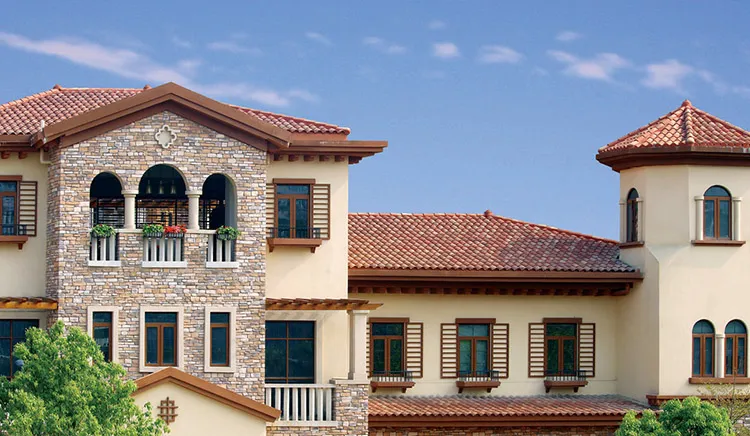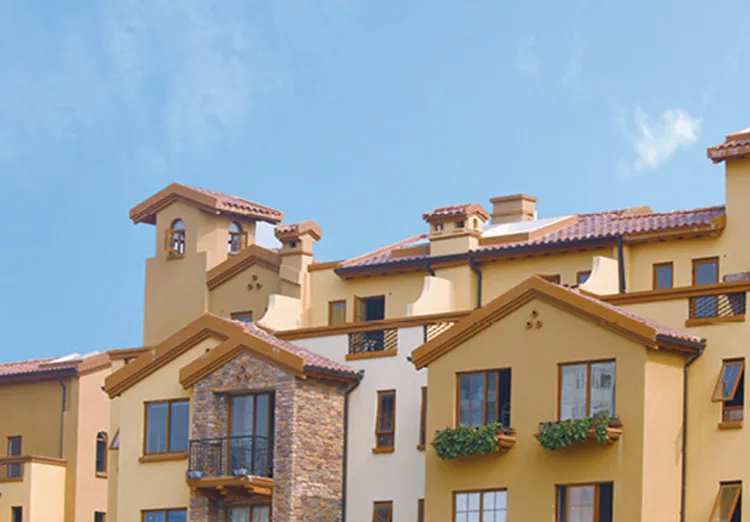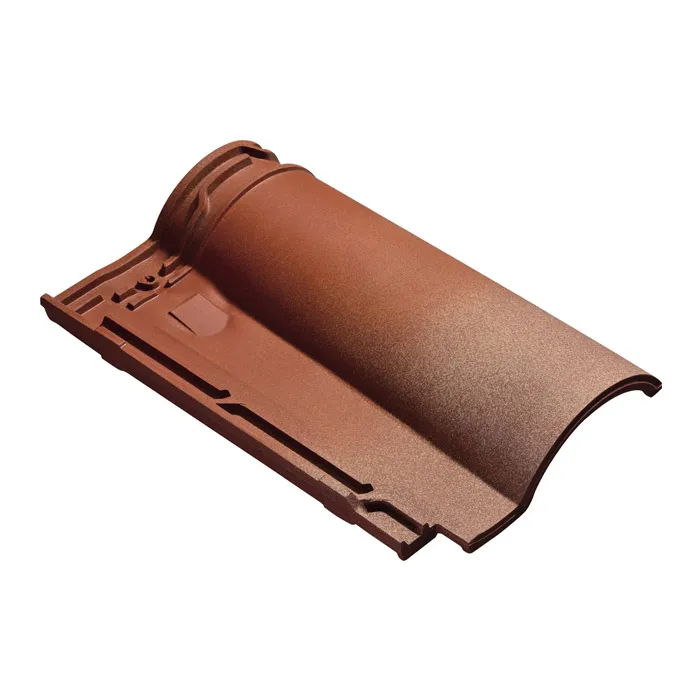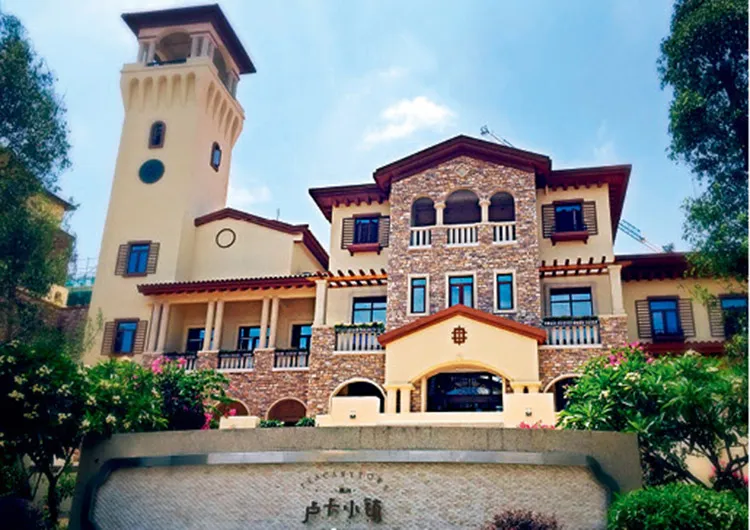Globally, the choice of building materials directly affects the appearance, function and durability of buildings. Among various roofing materials, roman clay roof tiles are widely favored for their unique aesthetic characteristics and excellent durability. Their unique arched design not only gives the building a classical and elegant appearance, but also makes roman clay roof tiles an ideal choice for roof design in many regions. However, roman clay roof tiles are not suitable in all geographical locations or climate conditions. The areas where it is suitable need to consider a variety of factors, including climate conditions, architectural style, local building traditions, and the characteristics of the tiles themselves.
This article will analyze from multiple perspectives which areas roman clay roof tiles are most suitable, discuss the advantages and limitations of this material, and provide professional guidance to help architects, construction workers and consumers make wise choices.

What are the advantages of roman clay roof tiles?
Before analyzing its applicable areas, it is first necessary to understand the basic characteristics of roman clay roof tiles and why it is so widely loved.
Advantages of roman clay roof tiles:
1. Unique design and structure
2. Durability and weather resistance
3. Aesthetic value
4. Environmental friendliness
1. Unique design and structure
The design of roman clay roof tiles originated from ancient Rome. Its shape resembles a semicircular vault. The curvature of the tiles is not only decorative, but also helps to waterproof and drain water. Due to its unique arched design, roman clay tiles are installed in a way that each tile overlaps, ensuring that rainwater does not penetrate the roof.
2. Durability and weather resistance
Roman clay roof tiles are usually made of natural clay, which makes it extremely durable. Clay roof tiles are able to withstand a variety of harsh weather conditions, including high temperatures, strong winds and heavy rain. In addition, clay roof tiles are not easily damaged by ultraviolet rays, the color remains long-lasting, and they are extremely weather-resistant.
3. Aesthetic value
Due to the traditional design of roman clay roof tiles, it brings a unique sense of classicism and elegance to the building. Whether used for residential, villa or commercial buildings, this type of roof tile can enhance the beauty of the building and present a high-end, historical atmosphere.
4. Environmental protection
Roman clay roof tiles are a natural material that does not contain harmful chemicals and has less pollution to the environment during the production process. At the same time, clay has good recyclability, which makes it also highly competitive in the field of sustainable construction.

The influence of climate conditions on the applicability of roman clay roof tiles
The applicability of roman clay roof tiles is closely related to local climate conditions. The climate differences in different regions determine the effect of the use of roman clay roof tiles. The following is an analysis of the applicability of roman clay roof tiles under several typical climate conditions:
1. Warm and dry climate
Roman clay roof tiles are most suitable for use in warm and dry climate areas. In this climate, the performance of roman clay roof tiles can be maximized. First, clay itself has good air permeability and moisture absorption. In the hot summer, the roof can maintain a lower temperature to avoid overheating inside the building. Secondly, the dry climate will not cause corrosion and deformation of clay roof tiles, and the life of the tiles will be relatively long.
Typical application areas:
● Mediterranean region: This region is warm and dry all year round, and the use of roman clay roof tiles is very common.
● Southwest United States: Such as California, Arizona and other regions, the climate is dry and sunny all year round, suitable for installing clay roof tiles.
● Parts of Australia: Such as some arid areas in Queensland and New South Wales.
2. Temperate climate
In temperate climate areas, the four seasons are distinct, the summer is relatively warm, and the winter may be cold or snowy. Although this climatic condition is relatively complex, roman clay roof tiles are still suitable for these areas. Due to the firmness and weather resistance of clay tiles, they can effectively cope with different challenges in temperate climates.
However, in cold areas, if the area has a lot of snow all year round or frost often occurs, the performance of roman clay roof tiles may be affected to a certain extent. The moisture absorption of clay may cause the tiles to crack or be damaged when exposed to severe cold weather for a long time. Therefore, when using in these areas, special attention should be paid to the quality and installation process of the tiles to ensure the cold resistance of the tiles.
Typical application areas:
● Central and southern Europe: For example, Spain, Italy and southern France, the warm climate is suitable for the use of roman clay roof tiles.
Some areas in the eastern and northwestern United States, such as New York and Boston, are cold in winter, but the climate in these areas is still suitable for the use of roman clay roof tiles, especially in areas with good outdoor environmental conditions.
3. Humid and rainy climate
For areas with perennial humidity and rain, roman clay roof tiles are less suitable. Although the design of Roman tiles helps to prevent water from leaking, due to the water absorption characteristics of the clay itself, long-term exposure to a humid environment may cause damage to the surface of the tiles. Long-term humid weather may cause water seepage on the roof and even the growth of mold or algae. In addition, excessive moisture may affect the firmness of the tiles, making them prone to cracking or deformation.
Typical unsuitable areas:
● Tropical rainforest climate areas: Such as Southeast Asia, the Amazon Basin, etc., which are perennially humid and rainy, roman clay roof tiles may not be able to withstand long-term humid environments.
● Pacific Islands: Some humid island areas, especially those close to tropical climates, are not suitable for the use of roman clay roof tiles.
4. Cold and snowy climate
In cold and snowy areas, the use of roman clay roof tiles is more restricted. Although this type of roof tile can provide excellent insulation, excessive snow accumulation may increase the burden on the roof, causing the roof to be unable to withstand the heavy snow pressure. Especially in areas where the snow is too thick or the snow is not cleared for a long time, the roof tiles may crack or slide, causing water seepage on the roof.
Typical unsuitable areas:
● Nordic countries: such as Sweden and Norway, which are cold all year round and have more snowfall, and are suitable for using roof materials that are more resistant to snow pressure.

Matching of architectural style and roman clay roof tiles
In addition to climate factors, architectural style is also a key factor in determining whether roman clay roof tiles are suitable. The classical appearance of roman clay roof tiles makes it very suitable for matching with traditional architectural styles such as Mediterranean style, Italian style, and Spanish style. When it is combined with natural materials such as red bricks, wood, and stone, it can show a natural and simple beauty, giving people a warm and comfortable feeling.
Although the use of roman clay roof tiles is relatively rare in some modern buildings, in certain specific cases, designers can create a modern and retro style by integrating with other modern materials. Nevertheless, the traditional appearance of roman tiles may seem a bit abrupt in some architectural styles, so the overall design needs to be considered when choosing.

Installation and maintenance of roman clay roof tiles
Whether roman clay roof tiles are used in whichever area, proper installation and regular maintenance are the key to ensure their long-term use. Although clay roof tiles have high durability, they need to be installed to ensure that there is sufficient overlap between tiles and the roof slope is appropriate to ensure that moisture can be drained quickly. In addition, in colder or wetter areas, special attention should be paid to avoid moisture penetration during installation.
Regular inspection and cleaning are also essential to extend the service life of roman clay roof tiles. Especially in areas with tree shade, clearing leaves and debris and ensuring that the drainage system is unobstructed will effectively prevent water damage to roof tiles.
As a pioneer in the building materials sector, Rongguan blends tradition with innovation to produce premium products such as quartz stone countertops, terrazzo flooring, and clay roof tiles. Our Foshan-based manufacturing plant spans 300,000 square meters and boasts cutting-edge production lines that deliver efficiency and quality. Catering to clients across North America, Europe, and Southeast Asia, we provide promotional offers, bulk order discounts, and tailored customization to meet your specific needs. Choose Rongguan for reliable materials that elevate the standard of your projects.

